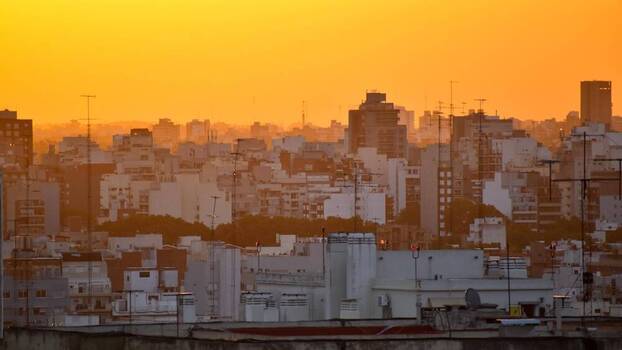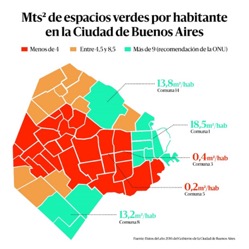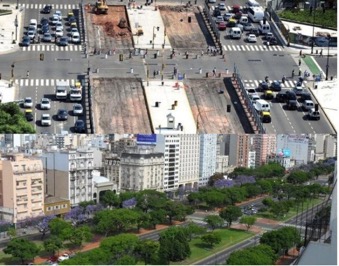
Climate change is at the heart of the denialist agenda of the global right. Despite the consensus among scientists and the clear evidence that climate events leave in their wake, a significant number of those in power defend the idea that the climate crisis is a hoax. The evidence shows that these events are not only becoming more frequent but also more extreme, thus resulting in more severe consequences.
Elis Soldatelli coordinates the climate and energy programme at the Rosa Luxemburg Foundation’s Brazil and Paraguay office.
Although our countries and cities are not among the largest contributors to the environmental crisis, some research suggests that “Latin America and the Caribbean are among the regions most affected by climate change and external meteorological phenomena, which are causing enormous damage to life, health, water, energy, and socioeconomic development in the region. Between 1998 and 2020, climate-related events and their impact claimed over 312,000 lives in Latin America and the Caribbean, affecting more than 277 million people”.
In this context, it is estimated that 80 percent of the total damage caused by climate events in the region occurs in urban areas. As is widely known, these events disproportionately affect disadvantaged communities, which have seen their homes destroyed and their ability to stay on their land threatened by climate change.
Land has also been commodified in cities and, as a result, the real estate market has enabled the kind of extractivism described by Acosta, with urban land now an asset appropriated in large volumes by capital.
We are at a crucial juncture in which the environmental crisis, social inequality, and spatial injustice have now converged. These three phenomena cannot be explained — whether together or in isolation — without challenging our current model of development and urban planning. Testing explanations as based on an analysis of this model provides us not only with a means to understand the impact of the climate crisis with which we are currently confronted, it also helps us to develop tools, alternatives, and projects that can give us solutions to tackle it.
Urban Extractivism
For this reason, we believe it is crucial address the concept of “urban extractivism” when it comes to the climate crisis in urban contexts. Talking about urban extractivism means establishing a relationship between environmental collapse and the deepening of social and gender inequality caused by the capitalist urban model. Sacrifice zones — that is, geographic areas that have been systematically degraded by heavy industrial activity — also exist in cities. Real estate speculation encroaches on environmentally protected areas, such as wetlands, and devastates entire territories, thus contributing to the precarious conditions of those who have already been pushed to the city margins.
Understanding the dynamics of traditional extractivism and the phenomena characteristic of neoliberal cities has led us to conclude that the logics, practices, and consequences of mega-mining, fracking, and the expansion of monocultures can be likened to those that result from real estate speculation and other persistent dynamics that are characteristic of our large cities. This is the basis for introducing the category of urban extractivism, a concept that seeks to address the problems and inequalities present in cities, not as isolated issues but as the result of a specific development model.
Although the concept of urban extractivism was coined in Argentina in an attempt to provide the academic field and social movements with a new notion that would help understand the environmental, social, and housing problems that persist in the city of Buenos Aires, it could well be applied to the analysis of various phenomena common to all large Latin American cities. Thinking urban settings through the lens of extractivism allows us to examine phenomena such as: real estate speculation; the disproportionate allocation of public land for private development; the literal cementing of ever greater areas of urban nature; the felling of trees to create new roads; gentrification; the rise in violent evictions; the housing crisis: as well as increased flooding and its worsening effects on the population. It also allows us to look at these phenomena in relation to the economic model that produces and sustains them.
Climate Events in Argentina and Uruguay
April 2023 – The city of Buenos Aires and the surrounding area, the Conurbano bonaerense, are suffocated by intense smoke and the smell of burning. The authorities advise people to wear a mask to avoid respiratory diseases.
August 2023 – Following three consecutive years of drought, Uruguay finds itself at the height of its water crisis. For weeks, the citizens of the capital, Montevideo, which is located 200 kilometres from Buenos Aires, bathe, cook, and make mate with salty water due to major problems in the supply of drinking water.
February 2024 – The deadliest wave of wildfires to ever hit Argentina kills 123 people and destroys around 6,000 homes. The fires occur in the midst of a heat wave, drought, and an episode of high winds brought on by a combination of El Niño and climate change.
March 2024 – Chaos grips the Metropolitan region of Buenos Aires following extreme rainfall. Thousands of homes and goods are destroyed, entire neighbourhoods are in a state of emergency. 120,000 people can no longer access electricity.
May 2024 – Less than a year after the great drought, Uruguay is forced to evacuate more than 2,500 people due to flooding.
For ease of understanding, and following Alberto Acosta, “we will use the term extractivism to refer to those activities which remove large quantities of natural resources that are not processed (or processed only to a limited degree), especially for export. Extractivism is not limited to minerals or oil. Extractivism is also present in farming, forestry and even fishing.”
As has been argued by various scholars, extractivism is also a model of territorial occupation that seeks to displace other economies by competing for access to water, energy, and other resources, while creating dynamics of exclusion and new language as to how value is assigned to land.
An Accelerated Process of Extraction
Land has also been commodified in cities and, as a result, the real estate market has enabled the kind of extractivism described by Acosta, with urban land now an asset appropriated in large volumes by capital. In this sense, the Autonomous City of Buenos Aires is undergoing an accelerated transformation based on the extractive model, in which large corporations collect the income generated from the land. We are thus confronted by a model of land occupation that generates real estate speculation, internal displacement, wealth accumulation, the appropriation of public goods, and widespread environmental damage, as well as institutional and social deterioration.
The city is being economically squeezed under the pretence of development, causing dramatic land and social inequalities. The displacement caused by eviction capitalism leaves its mark across the city, while the consequences of the climate crisis continue to have a greater impact on its most neglected neighbourhoods and communities.
Unfulfilled Basic Needs
In Buenos Aires, the map of unmet basic needs coincides with the neighbourhoods worst hit by climate events. Low-income neighbourhoods are exposed to higher climate risk because of higher population density, poor ventilation in homes, and the lack of basic infrastructure, as well as an absence of green areas that contributes to higher temperatures and the urban heat island effect. The location and built features of these neighbourhoods are also conducive to flooding during rainfall. The heavy storms that struck the country in March 2024 had major consequences in the City of Buenos Aires, the Greater Buenos Aires area (GBA), and part of the Province of Buenos Aires. In particular, the city’s low-income neighbourhoods were badly affected due to the same structural sanitation problems that affect people in their everyday life.
However, the classes that have been rendered subaltern are not the only ones to suffer the effects of climate change. In a city that is now asphyxiated by asphalt, the population as a whole is beginning to experience a drop in their quality of life. In the last fifteen years, 500 hectares of public land have been lost, the equivalent of 500 urban blocks. Neoliberal real estate expansion is destroying green areas, while the city is experiencing a crisis of public space that is deepened by exclusionary urban planning based on privatization. The model employed by the City of Buenos Aires allows towers exceeding 100 metres to be constructed on ecological reserves without any requirements for environmental impact studies.

The government of Buenos Aires advertises it as a green city. Yet, it is one of the cities with the least amount of green area per capita in Latin America. The area surrounding the central corridor, which was designed with public transportation in mind, is one of the worst in terms of this metric. Motor transport is responsible for 29 percent of greenhouse gas (GHG) emissions in the city and the corridor should, as such, have the largest number of trees in order to filter GHGs. Extractivism in the city of Buenos Aires has led to the irrecoverable loss of green areas and trees.
Buses instead of Trees
To give just one example, the city built dedicated bus lanes on Avenida 9 de Julio in 2013. As part of this development, for which no environmental impact studies were conducted, more than 1,200 trees of different species were felled, many of them over 40 years old. In addition to the loss of nesting places for birds, green spaces that were essential for regulating temperature and humidity, as well as producing oxygen and filtering pollution were also sacrificed. Trees absorb pollutants, clean the air, and attenuate noise pollution. Through this project alone, the city lost thousands of carbon storage sites that contributed to climate change mitigation as well as hundreds of square metres of land that served to filter rainwater and diminish the risk and eventual impact of flooding.

While cities in other parts of the world are rapidly implementing measures and policies to adapt to climate change, the government of Buenos Aires continually fails to address the problem seriously and seems to ignore the strategic importance of preserving urban nature in times of climate crisis. Everything can be sacrificed to ensure financial capital investment in the city. Because of urban extractivism, the City of Buenos Aires has lost absorption ground, wetlands, butterflies, birds, oxygen, and shade. As maximum annual temperatures rise, residents are now exposed to unbearable heatwaves and new epidemics.
2024 saw the largest dengue fever outbreak in Argentinean history, a phenomenon that is directly linked to higher temperatures and extreme rainfall. The fact that the City of Buenos Aires registered the highest number of cases can be explained by the analysis above. This epidemic and the number of people affected by the exponential increase in rainfall seem to have sounded the alarm bells for the city’s government, which set up its first climate change cabinet in April. The goal was to design a mitigation and adaptation plan in response to global warming, the effects of which are hitting Buenos Aires with increasing frequency and force.
A Climate Action Plan for the City
Buenos Aires now has a Climate Action Plan for 2050, which includes everything from massive infrastructure projects to early-warning measures and shelters for events such as extreme storms and heatwaves. Networks of climate shelters usually include closed spaces (museums, cultural centres, libraries, community centres, etc.) that are either air-conditioned or offer more comfortable conditions than outside, as well as open spaces with shade or significant presence of green infrastructure such as parks and squares.
Regarding mobility, the plan includes 15 new pedestrian areas and 48 “meeting streets” — pedestrians streets for neighbourhood meetings and cultural events — to be built by 2030, as well as policies that promote cycling. One further objective — to be achieved within the next few years — is that one million journeys per day be made by bicycle. It also projects that all buses will have zero-emission technology by 2050.
The logics, practices, and consequences of mega-mining, fracking, and the expansion of monocultures can be likened to those resulting from real estate speculation and other persistent dynamics characteristic of our large cities.
The plan also foresees the renovation of 80 percent of residential buildings and the installation of photovoltaic panels on 30 percent of residential roofs by 2050. Similarly, all public buildings in the city are to have energy efficiency plans and all low-income neighbourhoods are expected to have gardens for water absorption and food production by 2025.
While certain goals seem very distant at the moment, others seem more feasible. However, the climate crisis requires the urgent implementation of a different model of development and urban planning, one that builds cities genuinely capable of caring for life, and that create real equality in order to protect those most affected by, and most vulnerable to, the crisis.
Alternatives to the Patriarchal Development Model
Cities planned according to the model of urban extractivism are a projection of capitalist and largely patriarchal needs, desires, and values. According to Col·lectiu Punt 6 — a cooperative of women architects, sociologists, and urban planners who approach urban planning from a gender perspective — cities were designed and built as based on criteria that purport to be abstract, neutral, and normal. However, these criteria are based on a very specific set of experiences, specifically those of a male, middle-aged, and heterosexual minority that enjoys stable employment and that need not concern itself with the tasks of reproduction, which are carried out by others in the absence of any due recognition.
Consequently, cities have so far been planned in accordance with the logic of production and economic development. Precisely this paradigm, however, could be overturned by an ecofeminist approach to urban planning. Ecofeminist approaches envision cities that are actually designed for people, and that have the reproduction and the improvement of everybody’s living conditions in mind. In contrast to the current model, feminism has concrete proposals on how to contribute to the construction of egalitarian cities, which go beyond strategies that only tackle problems that specifically affect women, girls, and diverse people. Feminist urban development integrates the logic of reproduction and care as the axis of urban design and as part of the transition towards cities that are more humane, cities in which people can live better and in the absence of inequalities of any kind, and cities that do not reproduce socially imposed gender roles. Therein lies the potential of ecofeminist urban planning and its importance as a tool with which to confront the climate crisis.